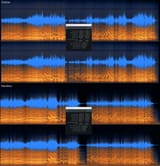Search Results
6/28/2025, 8:38:34 PM
>>126854649
>when you posted Cortot
I didn't. Even if I did it wouldn't really be an applicable comparison; they have different approaches to tempo rubato. Cortot can be quite persistent in his rubato, i.e. changes bar to bar. In that context, a sudden retard or acceleration during a climax doesn't stick out to me as much. Cortot's recordings are all over the place, he has some recordings where he's technically flawless and others where he's a mess. It's understandable. During the time of early electrical recordings, you maybe got two or three takes, max. It was too expensive to do retakes, so a lot of performances are essentially live. The idea of doing a studio performance that's almost entirely takes/retakes spliced together, like Zimerman's Liszt Sonata, was an alien concept to them. And, to be fair to Cortot, he was a teacher first and a concert pianist second.
>but recording quality matters about as much as the interpretation
I do disagree, but only with the "as much" statement. Sure, ideally I would like to have a great sounding recording, but I can usually hear more than enough to get something out of an aged interpretation, thanks to the piano being an instrument that's relatively limited in terms of frequency response. Remember, the piano's most audible frequency range is 27 Hz to 4200 Hz, with less audible (but still present) frequencies extending up to 8500 Hz. Depending on the piano, of course. Early electrical recordings could go up 5500 Hz. Depending on the recording, of course. That means that the vast majority of the piano's FR is captured, which leaves us with dynamics and balance, which, admittedly, can be highly variable, but is nonetheless usually acceptable enough to me to appreciate the interpretation.
For example, in my image I have Fischer and Koroliov. Two different approaches, but sufficient to show how in terms of dynamics they're both captured sufficiently. It's not as if the early recording is squashed dynamically in this case.
>when you posted Cortot
I didn't. Even if I did it wouldn't really be an applicable comparison; they have different approaches to tempo rubato. Cortot can be quite persistent in his rubato, i.e. changes bar to bar. In that context, a sudden retard or acceleration during a climax doesn't stick out to me as much. Cortot's recordings are all over the place, he has some recordings where he's technically flawless and others where he's a mess. It's understandable. During the time of early electrical recordings, you maybe got two or three takes, max. It was too expensive to do retakes, so a lot of performances are essentially live. The idea of doing a studio performance that's almost entirely takes/retakes spliced together, like Zimerman's Liszt Sonata, was an alien concept to them. And, to be fair to Cortot, he was a teacher first and a concert pianist second.
>but recording quality matters about as much as the interpretation
I do disagree, but only with the "as much" statement. Sure, ideally I would like to have a great sounding recording, but I can usually hear more than enough to get something out of an aged interpretation, thanks to the piano being an instrument that's relatively limited in terms of frequency response. Remember, the piano's most audible frequency range is 27 Hz to 4200 Hz, with less audible (but still present) frequencies extending up to 8500 Hz. Depending on the piano, of course. Early electrical recordings could go up 5500 Hz. Depending on the recording, of course. That means that the vast majority of the piano's FR is captured, which leaves us with dynamics and balance, which, admittedly, can be highly variable, but is nonetheless usually acceptable enough to me to appreciate the interpretation.
For example, in my image I have Fischer and Koroliov. Two different approaches, but sufficient to show how in terms of dynamics they're both captured sufficiently. It's not as if the early recording is squashed dynamically in this case.
Page 1
